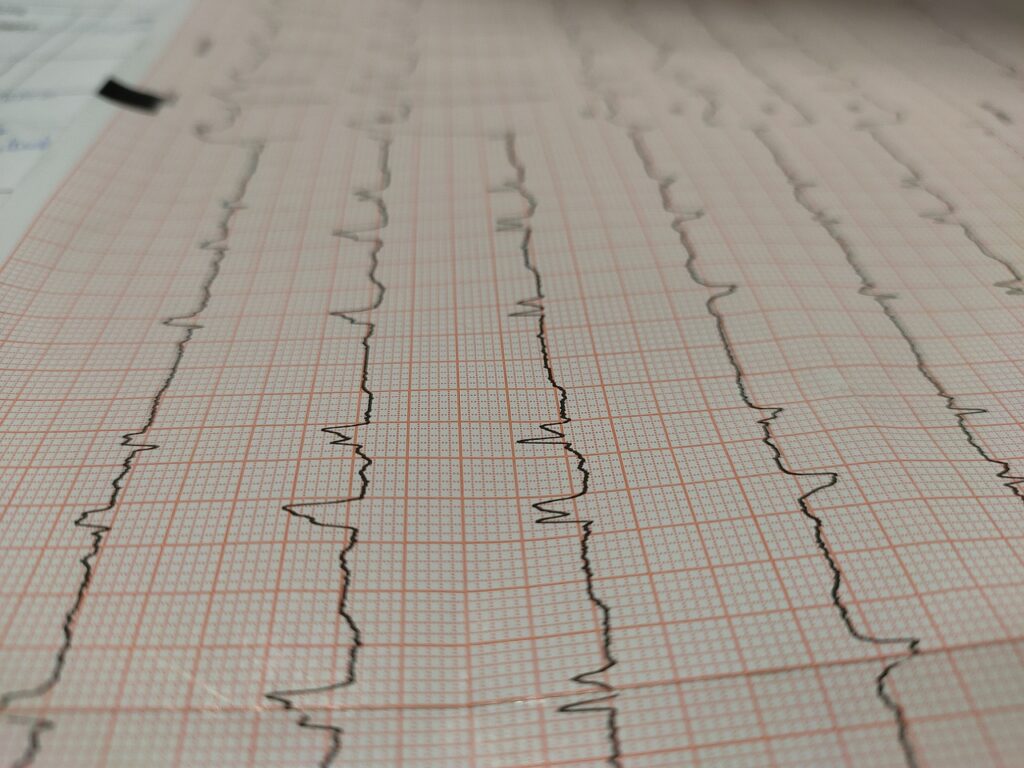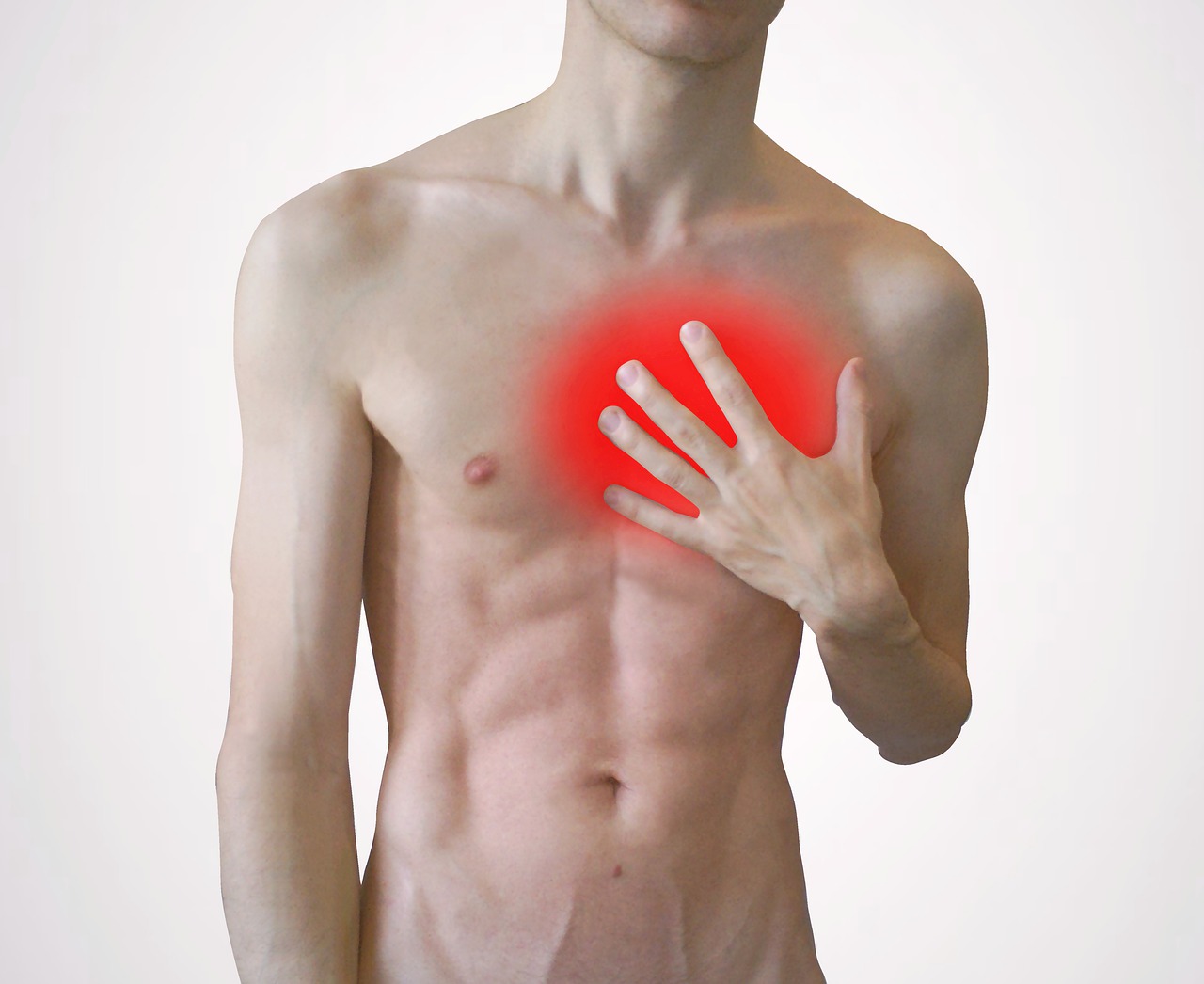A condition that leads to extreme pain in the pectoral region or the chest, that spreads to the neck, shoulders and arms due to inadequate blood supply to the heart.
Characteristics and types of chest pain:
- 1) Acute
- 2) Recurrent
- 3) Persistent
Differential Diagnosis:
- 1) Gastroesophageal disease:
- In the form of gastritis
- 2) Peptic ulcers:
- Development of sores on the lining of the stomach
- 3) Gastroesophageal reflux:
- An acid reflux
- 4) Gall stones:
- Hardened deposits seen in the gall bladder
- 5) Pericarditis:
- Swelling and thickening of the tissue surrounding the heart all in all
- 6) Ischemic heart disease:
- A heart attack that occurs when the arteries are narrowed and disrupts the blood supply
- 7) Pulmonary embolism:
- A blockage simultaneously seen in the arteries of the lungs
- 8) Aortic stenosis:
- Narrowing of the aortic valve that disrupts flow of blood

Chronic causes:
A) Angina or chest pain due to disrupted blood flow to the heart:
- Patient experiences subsequently with:
- Severe squeezing, constriction, pressure in the sternum or middle of the chest, radiating to the left arm.
- Simultaneously, detected in ECG and treated with administration of Nitroglycerin.
B) Unstable chest pain:
- Patient presents with constriction, severe squeezing and pressure in the sternum, radiating to the left arm and last longer for >30 minutes.
- Not relieved by Nitroglycerin.
C) Pulmonary embolism:
- Patient experiences blood while coughing, decreased oxygen levels in blood and increased heart rate.
- Pain is usually towards the sternum.
D) Pleurisy:
- Patient presents with pain that was stabbing like, unilateral and superficial, that aggravates by cough and respiration.
E) Pericarditis:
- Patient presents with:
- Pain that appears crushing, steady and in the area of the sternum.
- Pain, simultaneously aggravated by:
- Cough with deep breathing and frequently in sleeping or supine posture. Relieved by sitting upright.
Acute causes:
A) Chest wall pain:
- Patient presents simultaneously with dull aching pain, produced by external pressure on the chest wall or costochondral junction.
- Excessive exercise
- Fracture due to trauma
- Additionally, Straining of muscles and cartilages
B) Esophageal pain:
- Inability to swallow food
- Acid reflux
C) Others:
- Diseases of the breast
- Pneumonia
- Osteoarthritis
Symptoms:
- Sharp pain:
- subsequently radiating to the left arm
- Acid reflux
- Gastritis
- Shortness of breath
- Profuse sweating
- Dizziness
- Weakness
- Additionally:
- Nausea and vomiting
Approaching a patient with chest pain and treatment:
- Patient comes to the hospital with acute symptoms of chest pain since half an hour, with no history of chest pain in the past.
- Approach the patient by checking his airway, breathing and circulation
- Additionally, connect the patient to the monitor and measure all the parameters.
- Parameters simultaneously like oxygen levels, blood pressure, sugar levels and pulse monitored.
- Connect face mask if the oxygen levels are less than 90% and rule out improper breathing.
- The patient usually regains oxygen levels all in all
- Connect cardiac monitor and get an ECG
- A 12 lead ECG is being employed.
- If ECG shows S-T elevation, it may be a heart attack
- 2 large 18 gauge cannula simultaneously used to start intravenous infusion
- Start pain medication
- Subsequently, Oral tablet Sorbitate 10mg/kg is given sublingually or under the tongue for widening of the arteries or relaxing the blood flow in arteries.
- Additionally, tablet aspirin is given for acute pain
- If the pain is severe, then start Intravenous Morphine 2mg, Meanwhile an antiemetic is also used like metoclopromide.
- If the patient has been diagnosed with heart attack then start with these 3 medications:
- Aspirin 300mg crushed
- Clopilet 300mg
- Atorvastatin 80mg
- If the pain persists even after the treatment then get a cardiology consultation.
- Start Tab Nitroglycerin 5 micrograms – 200 micrograms
- Additionally, patient should be shifted to the cardiac care unit for PTCA OR Percutaneous Transluminal Coronary Angioplasty.
Follow us for more such blogs here

